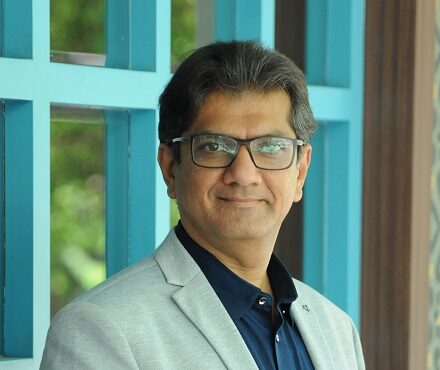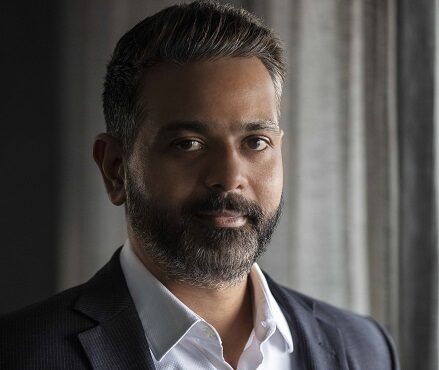Revolutionizing Aesthetics: Dr. Monisha Kapoor Introduces Cutting-Edge Devices to Transform Aesthetic Procedures

- How has technology impacted plastic surgery over the past few years, and what technological advancements do you see shaping the field in the future?
Before the advent of lasers and energy-based devices in plastic surgery, there were a few methods available, like blades, knives, and scissors, by which we cut tissues and moulded them into desired shapes. But with technology, the plastic surgeons now have more choices with their tools. For example, before energy-based devices, when we used to do nose jobs, we used to use a chisel and hammer. Chisel and hammer the way a carpenter uses them to break the bone. And now we have piezo. Piezo is an ultrasonic cutting device for the bone that does not harm other tissues of the body and leads to less swelling and less pain postoperatively. This is the beauty of technology, and as a boutique cosmetic surgery centre, we invest in it. We are delighted to be the first centre in all of India to use this tool starting in 2018, as well as the first in the US. This tool was introduced in 2017.
Devices like lasers are a big boon to plastic surgeons because the scars that are left due to surgery can be taken care of by these energy-based devices like lasers. Lasers are of different types, and they are very sophisticated tools. Just like cars, there are brands in lasers, and depending on the safety and efficacy of each of these lasers on the skin and what kind of improvement these lasers give our patients, there are different brands available. At Dr. Monisha Kapoor Aesthetics, it’s our ritual to invest in one of the best brands and best lasers, not only in the country but in the world. We have been the first to adopt many technologies, such as Quanta Q-switch laser, pellave skin tightening, and Piezo, for the first time in India.
Many people don’t want to undergo surgery because they are scared. Nowadays, because of the latest technology, we don’t have to cut and sew. These energy-based devices can do half of the job that was initially done because of cutting and stitching.
- How do you use data and analytics in your practice, and what specific metrics do you track to ensure the best possible outcomes for your patients?
I am a member of the American Society of Aesthetic Plastic Surgery and the International Society of Aesthetic Plastic Surgery. These societies develop data and analytics, and because I am a member, I have access to all the journals that are available in the world.
In plastic surgery, there are various problems that are difficult to solve. Using data and analytics, I examine how these problems were previously addressed through journals. This benefits patients by delivering the best possible outcomes through learning from the past experiences and knowledge of the best plastic surgeons worldwide.
- Can you discuss any collaborations or partnerships that you have with health tech companies, and how do these partnerships benefit your patients and your practice?
The ethical plastic surgeon in question does not collaborate or partner with health tech companies, and instead provides direct discounts to patients in lieu of referral fees. While this may benefit patients financially, it is important to note that such an approach may not be sustainable in the long term and may limit the availability of certain technologies or procedures that could benefit patients. It is also important to consider the ethical and legal implications of such practices. Ultimately, it is up to the individual practitioner to determine what approach aligns best with their values and practice goals.
- Can you discuss any specific health tech solutions that you use to enhance patient care and improve outcomes?
In 2018, we launched the Piezo tool, a specialized surgical instrument used in rhinoplasty or nose surgery. It utilizes ultrasonic technology to make precise cuts on bone and cartilage during the procedure. The Piezo tool is especially useful in rhinoplasty as it allows surgeons to make highly accurate cuts in areas that are difficult to reach using traditional surgical instruments.
During rhinoplasty, the Piezo tool can be used to reshape the nasal bone, refine the nasal tip, and reduce the size of the nasal hump. The ultrasonic vibrations of the Piezo tool allow for more controlled bone cuts, resulting in less damage to surrounding tissues and less bleeding. This leads to faster recovery time, less swelling and bruising after the surgery, and a more natural-looking outcome.
Since the launch of Piezo, it has become an essential tool in rhinoplasty, improving the precision and safety of the procedure. Prior to this, crude tools were commonly used in India, causing significant swelling and bruising on the face during facial work. With Piezo, other types of facial work, including bone work, can now also be done with better precision and accuracy.
Piezo has also brought about significant improvements in the quality of life for people with cleft noses and cleft lips, as they can now receive better treatment and care. People with birth defects like cleft lips and noses have seen improvements in their quality of life and have been able to return to work more quickly because of this new technology.
- How do you see the intersection of health and technology evolving in the coming years, and what impact do you think this will have on the plastic surgery field as a whole?
The major challenge in plastic surgery is the availability of donor tissue. However, I see the stem cell market as a big boon for the future of plastic surgery, as it may be possible to culture human organs in the laboratory. Currently, new technology for manufacturing cartilage is already being used in the US for plastic surgery. Unfortunately, no such laboratory or initiative has been established in India yet. Therefore, I have decided to open a lab where human organs can be cultured for use in plastic surgery.
To elaborate, the availability of donor tissue has always been a significant challenge in plastic surgery. The need for donor tissue, such as skin, bone, or cartilage, can lead to longer wait times, increased costs, and a higher risk of complications. However, advancements in stem cell research and tissue engineering may offer new solutions to this challenge. By culturing human organs and tissues in the laboratory, it may be possible to generate a reliable and accessible source of donor tissue.
Currently, new technologies such as 3D printing and the use of stem cells for tissue regeneration are being explored in the field of plastic surgery. In the US, a company has already started manufacturing cartilage for use in plastic surgery procedures. However, such initiatives are yet to be established in India, leading to a lack of options for patients seeking plastic surgery.
To address this issue, I have decided to open a laboratory in India, where human organs can be cultured for use in plastic surgery. This initiative can potentially revolutionize the field of plastic surgery in India by providing a reliable source of donor tissue and making plastic surgery more accessible to patients. However, establishing such a laboratory requires significant investment and research, and it remains to be seen how successful such an initiative will be in the long run.








